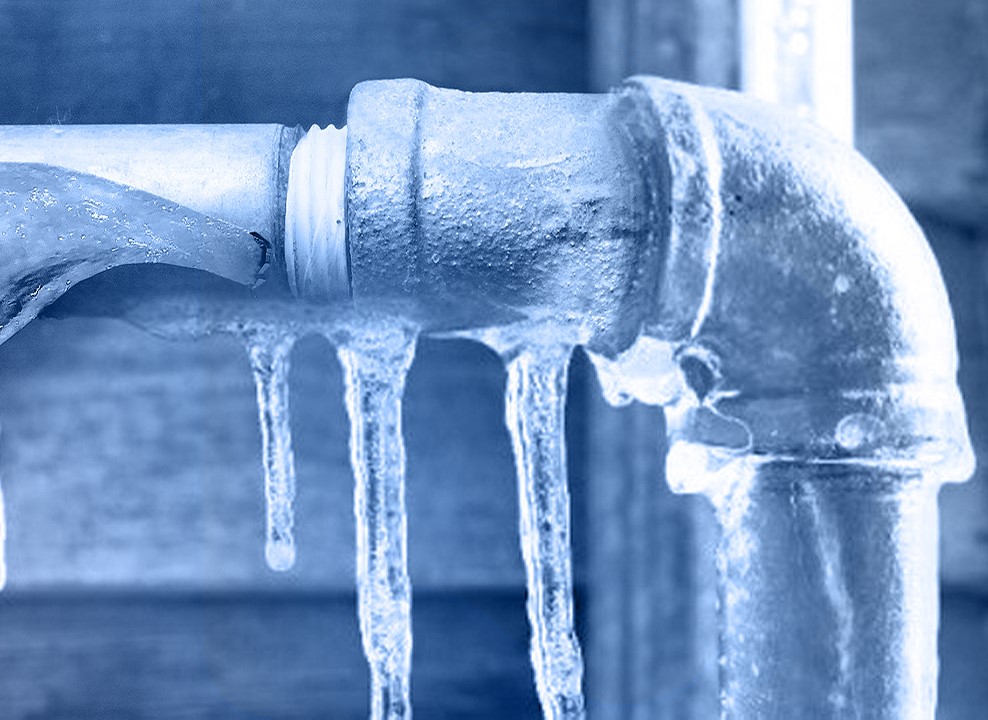The author is making a few good pointers on Preventing and dealing with frozen pipes in general in the article on the next paragraphs.

Winter can damage your pipes, particularly by freezing pipes. Right here's exactly how to stop it from happening and what to do if it does.
Introduction
As temperatures decrease, the danger of icy pipes increases, possibly causing costly repairs and water damages. Understanding how to avoid icy pipelines is vital for home owners in chilly climates.
Recognizing Icy Pipes
What triggers pipelines to ice up?
Pipes freeze when revealed to temperatures below 32 ° F (0 ° C) for prolonged durations. As water inside the pipelines ices up, it expands, putting pressure on the pipe wall surfaces and potentially causing them to burst.
Risks and damages
Frozen pipes can cause water system disturbances, property damage, and costly repair services. Ruptured pipelines can flood homes and trigger considerable structural damage.
Indications of Frozen Piping
Recognizing frozen pipes early can avoid them from breaking.
Just how to recognize frozen pipes
Search for decreased water flow from faucets, uncommon smells or sounds from pipelines, and visible frost on subjected pipes.
Prevention Tips
Protecting susceptible pipes
Wrap pipes in insulation sleeves or make use of warmth tape to shield them from freezing temperature levels. Concentrate on pipelines in unheated or external areas of the home.
Heating methods
Maintain interior rooms effectively heated up, especially locations with plumbing. Open cabinet doors to allow warm air to circulate around pipes under sinks.
Protecting Outside Pipes
Garden hose pipes and exterior taps
Disconnect and drain pipes garden tubes prior to wintertime. Set up frost-proof spigots or cover outdoor faucets with insulated caps.
What to Do If Your Pipes Freeze
Immediate activities to take
If you believe icy pipes, keep taps available to eliminate stress as the ice thaws. Use a hairdryer or towels taken in warm water to thaw pipes gradually.
Long-Term Solutions
Structural changes
Think about rerouting pipelines away from outside wall surfaces or unheated areas. Include extra insulation to attic rooms, cellars, and crawl spaces.
Upgrading insulation
Buy premium insulation for pipelines, attics, and walls. Proper insulation assists keep consistent temperatures and lowers the risk of frozen pipes.
Verdict
Preventing frozen pipelines requires positive steps and quick feedbacks. By recognizing the causes, signs, and safety nets, property owners can protect their pipes throughout cold weather.
6 Proven Ways to Prevent Frozen Pipes and Protect Your Home
Disconnect and Drain Garden Hoses
Before winter arrives, start by disconnecting your garden hoses and draining any remaining water. Close the shut-off valves that supply outdoor hose bibs and leave the outdoor faucet open to allow any residual water to drain. For extra protection, consider using faucet covers throughout the colder months. It’s also important to drain water from any sprinkler supply lines following the manufacturer’s directions.
Insulate Exposed Pipes
Insulating your pipes is an effective way to prevent freezing. Pipe insulation is readily available at home improvement stores and is relatively inexpensive. Pay close attention to pipes in unheated areas such as the attic, basement, crawl spaces, or garage. Apply foam insulation generously to create a buffer against the cold. You can also wrap your pipes in heat tape or thermostat-controlled heat cables for added warmth.
Seal Air Leaks
Inspect your home for any cracks or openings that could let in cold air. Seal any holes around the piping in interior or exterior walls, as well as the sill plates where your home rests on its foundation. Additionally, make sure to keep your garage door closed unless you’re entering or exiting. Leaving it open creates a significant air leak that can lead to frozen pipes.
Allow Warm Air Circulation
During cold snaps, it’s essential to allow warm air to circulate evenly throughout your home. Leave interior doors ajar to promote better airflow. Open kitchen and bathroom cabinets to help distribute heat consistently around the rooms. If you have small children or pets, be sure to remove any household chemicals or potentially harmful cleaners from open cabinets for safety.
Let Faucets Drip
A small trickle of water can make a big difference in preventing ice formation inside your pipes. When temperatures drop significantly, start a drip of water from all faucets served by exposed pipes. This continuous flow helps prevent the water from freezing. Additionally, running a few faucets slightly can relieve pressure inside the pipes, reducing the chances of a rupture if the water inside does freeze.
https://choateshvac.com/6-proven-ways-to-prevent-frozen-pipes-and-protect-your-home/

I ran across that page about 6 Ways to Prevent Frozen Pipes when doing a search on the web. For those who enjoyed reading our page please do not forget to share it. Many thanks for taking the time to read it.
Browse Website
 Ariana Richards Then & Now!
Ariana Richards Then & Now! Mason Gamble Then & Now!
Mason Gamble Then & Now! Sydney Simpson Then & Now!
Sydney Simpson Then & Now! Erika Eleniak Then & Now!
Erika Eleniak Then & Now! Sarah Michelle Gellar Then & Now!
Sarah Michelle Gellar Then & Now!